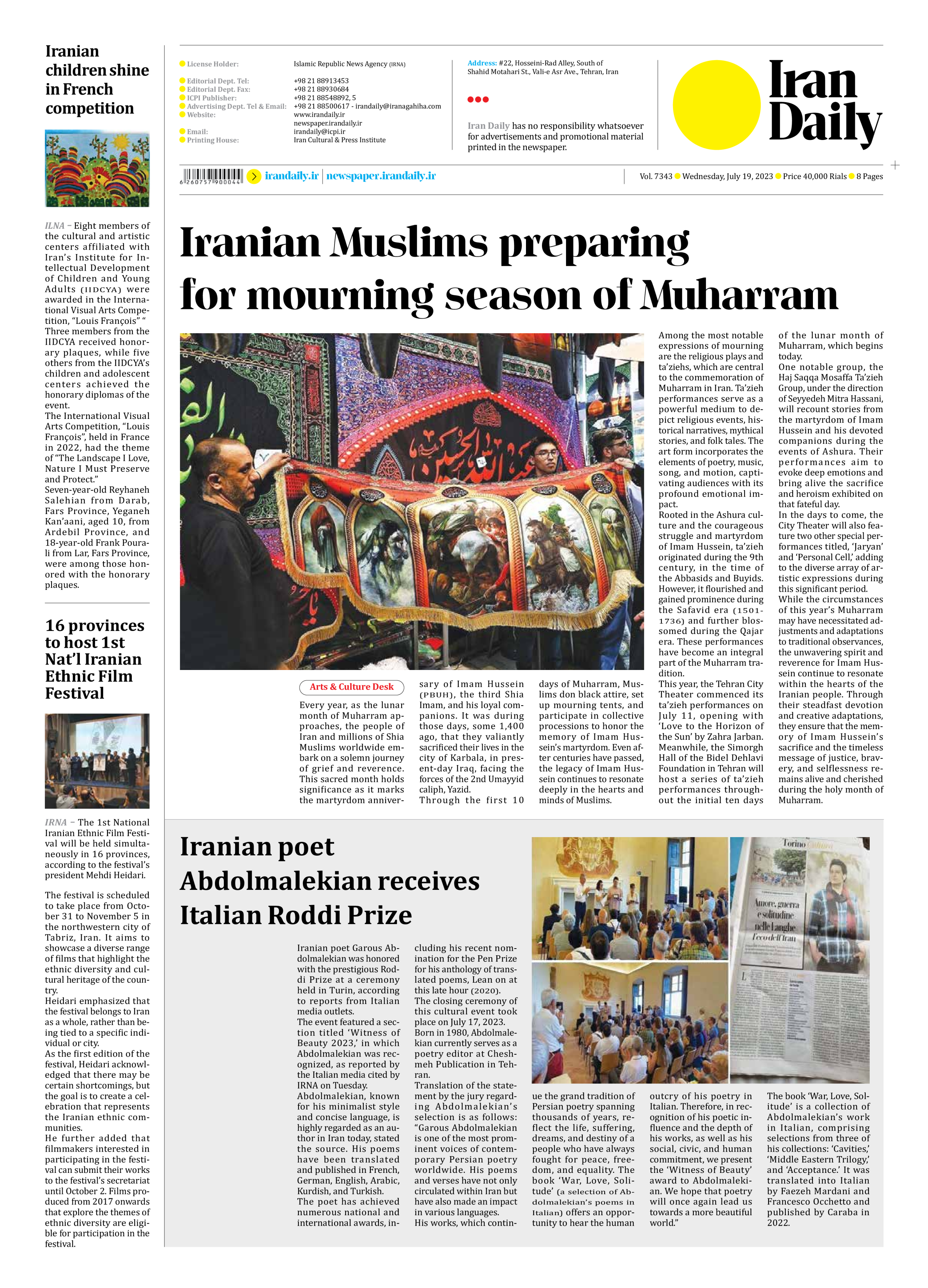
Iranian Muslims preparing for mourning season of Muharram
Every year, as the lunar month of Muharram approaches, the people of Iran and millions of Shia Muslims worldwide embark on a solemn journey of grief and reverence. This sacred month holds significance as it marks the martyrdom anniversary of Imam Hussein (PBUH), the third Shia Imam, and his loyal companions. It was during those days, some 1,400 ago, that they valiantly sacrificed their lives in the city of Karbala, in present-day Iraq, facing the forces of the 2nd Umayyid caliph, Yazid.
Through the first 10 days of Muharram, Muslims don black attire, set up mourning tents, and participate in collective processions to honor the memory of Imam Hussein’s martyrdom. Even after centuries have passed, the legacy of Imam Hussein continues to resonate deeply in the hearts and minds of Muslims.
Among the most notable expressions of mourning are the religious plays and ta’ziehs, which are central to the commemoration of Muharram in Iran. Ta’zieh performances serve as a powerful medium to depict religious events, historical narratives, mythical stories, and folk tales. The art form incorporates the elements of poetry, music, song, and motion, captivating audiences with its profound emotional impact.
Rooted in the Ashura culture and the courageous struggle and martyrdom of Imam Hussein, ta’zieh originated during the 9th century, in the time of the Abbasids and Buyids. However, it flourished and gained prominence during the Safavid era (1501-1736) and further blossomed during the Qajar era. These performances have become an integral part of the Muharram tradition.
This year, the Tehran City Theater commenced its ta’zieh performances on July 11, opening with ‘Love to the Horizon of the Sun’ by Zahra Jarban. Meanwhile, the Simorgh Hall of the Bidel Dehlavi Foundation in Tehran will host a series of ta’zieh performances throughout the initial ten days of the lunar month of Muharram, which begins today.
One notable group, the Haj Saqqa Mosaffa Ta’zieh Group, under the direction of Seyyedeh Mitra Hassani, will recount stories from the martyrdom of Imam Hussein and his devoted companions during the events of Ashura. Their performances aim to evoke deep emotions and bring alive the sacrifice and heroism exhibited on that fateful day.
In the days to come, the City Theater will also feature two other special performances titled, ‘Jaryan’ and ‘Personal Cell,’ adding to the diverse array of artistic expressions during this significant period.
While the circumstances of this year’s Muharram may have necessitated adjustments and adaptations to traditional observances, the unwavering spirit and reverence for Imam Hussein continue to resonate within the hearts of the Iranian people. Through their steadfast devotion and creative adaptations, they ensure that the memory of Imam Hussein’s sacrifice and the timeless message of justice, bravery, and selflessness remains alive and cherished during the holy month of Muharram.







